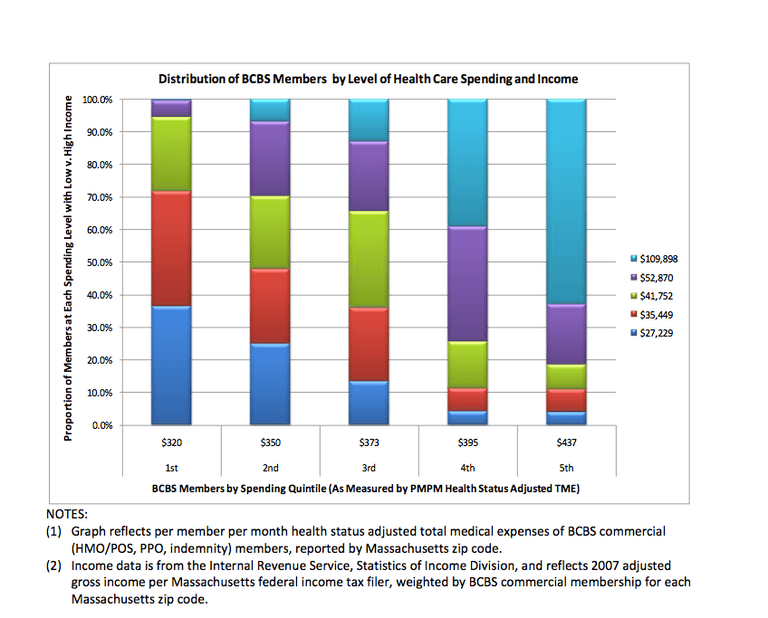Advertisement
Poorer Patients Help Subsidize Health Care For The Rich, Coakley Report Finds
Tucked into Attorney General Martha Coakley's exhaustive investigation of the drivers behind escalating health care costs in the state is a startling, new and counterintuitive finding: the richer you are, the more your insurer is probably spending on your health care. And the poor are helping to foot the bill.
Indeed, the report says, it appears that lower-income people are subsidizing the higher-cost care of the wealthy — the Chelseas of the state lending a hand to the Wellesleys, in effect.
As far as the attorney general's office knows, this is the first such analysis in the nation.
In what counts as a glimmer of irony in an otherwise serious document, the report says:
While we did not uncover any relationship between TME (total medical expense) and payment method, we did uncover a relationship between TME and patient income.
The relationship is this: "More money is being spent on the patients from higher income zip codes" and "those with lower TME may be
subsidizing the higher cost of care of those with higher TME in the same risk pool."
To come to that conclusion, the attorney general gathered information from the state's top three health insurers — Blue Cross Blue Shield of Massachusetts, Harvard Pilgrim HealthCare and Tufts Health Plan — on their members' spending by zip code, and compared it to data from the IRS on average income. They found that the higher income zip codes had higher total medical spending, which includes what insurers spend on care plus the patients co-pays and deductibles. This spending, the report notes is "not explained by the member being sicker or older" and it doesn't include services such as purely cosmetic surgery.
The attorney general found the same pattern among the commercial members of all three big insurers: the total medical spending for higher-income patients tends to be far higher than the total medical spending for lower-income patients. For instance, a Blue Cross member living in a tonier area like Wellesley with a six figure income is spending $437 per member per month on health care. That's compared to a member living in a neighborhood like Chelsea, where incomes are considerably lower, who is spending $320 per member per month, according to the report. And both consumers, the richer and the poorer, are likely paying comparable premiums.
Interestingly, when investigators examined the data by region, they found the relationship between level of health care spending and patient income to be strongest in three areas: Metrowest, Northeastern Massachusetts, and Boston and its surrounding towns.
So what's going on here? While there's a stereotypical notion floating around that poor people burden the health care system with overuse, and therefore cost more, it turns out in Massachusetts at least, the opposite seems to be true.
The report says that in general, two factors drive differences in spending: price (richer people are using pricier providers) and use (the wealthier are using more health care services.)
Another contributing factor, described in the report as the "service mix," is that "higher-income patients may be consuming more expensive services to treat the same illnesses, as compared to lower-income patients."
For example, it says,"if an expensive surgery and a less-expensive physical therapy regimen are both effective treatments for an injured knee, higher-income patients may be opting for, or being directed by their physicians to receive, the more-expensive treatment more often than lower-income patients."
This program aired on June 22, 2011. The audio for this program is not available.
